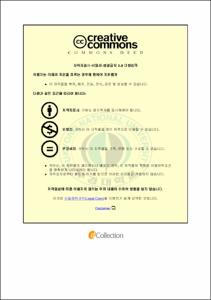한영 번역에 나타난 자타동 교체에 관한 연구
- Abstract
- A Study on the Alternation of Intransitive ⦁ Transitive Constructions in Korean - English Translations
Jeongmin Seo
Graduate School of English
Pukyong National University
Abstract
The purpose of this study is to discuss how different Korean transitive or intransitive verb sentences were translated into English transitive verb sentences by animacy and transivity. For this study, 160 English transitive sentences (including 80 animate subject sentences and 80 inanimate subject sentences) were selected from three novels (Please Look After Mom, There a Petal Silently Falls, The Thirteen-Scent Flowers). The following is the result of the study.
First, 107 Korean transitive verb sentences were translated into English transitive verb sentences. The 107 sentences were divided into two groups. The first group included subjects that were translated into subjects. Most of the animate subjects didn't have changes. The Korean inanimate subjects, such as organization, nature, machine, less typical agents (eg. headaches) and low transivity sentences were kept to be English subjects.
The second group included subjects that were translated into non-subjects. When subjects were translated into non-subjects, only animate subject sentences could be found. At that time, Korean animate subjects were translated into English indirect objects. Korean objects were kept to be direct objects in English. English subjects were the actors of each event.
Second, 53 Korean intransitive verb sentences were translated into English transitive verb sentences. These sentences were divided into two groups. The first group included Korean subjects that were translated into English subjects with 39 sentences in this case: 7 animate subject sentences and 32 inanimate subject sentences. Because intransitive sentences had lower transivity than transitive sentences, they could take inanimate subjects in Korean sentences.
The second group included subjects that were translated into non-subjects: 3 animate subjects and 11 inanimate subjects sentences. In the case of animate subjects, every animate subject was translated into an English object. English subjects were the actors of each event. In the case of inanimate subjects, while every Korean adverbial phrase was translated into an English subject: First, Korean adverbial phrases as a place were raised into English subjects. Then Korean inanimate subjects were translated into English objects. Second, by using the verb 'make' as a causative verb, Korean adverbial phrase as an instrument or a reason was raised into English subjects. Then Korean subjects were translated into English objects or English prepositional phrases. Third, Korean relative clauses were raised to English subjects. Then Korean subjects were translated into English prepositional phrases.
Above all, this study shows that 33% of Korean intransitive sentences were translated into English transitive sentences because of the animacy. Subjects of higher animacy transitive verb Korean sentences were translated into subjects of transitive verb English sentences. On the other hand, subjects of lower animacy intransitive verb Korean sentences were translated into English subjects of transitive verb English sentences because the higher transitivity sentences can't take inanimate subjects in Korean.
- Issued Date
- 2012
- Awarded Date
- 2012. 8
- Type
- Dissertation
- Publisher
- 부경대학교
- Affiliation
- 부경대학교 대학원
- Department
- 대학원 영어영문학과
- Advisor
- 김은일
- Table Of Contents
- 1. 서론 1
2. 이론적 배경 및 방법론 4
2.1. 이론적 배경 4
2.1.1. 유생성 4
2.1.2. 타동성 6
2.2. 방법론 8
3. 타동사 구문의 한 · 영 번역양상 비교 9
3.1. 한국어 타 · 자동사 문장 비교 9
3.2. 한국어 타동사 문장이 영어 타동사 문장으로 번역 10
3.2.1. 영어 생물 주어 11
3.2.2. 영어 무생물 주어 17
3.3. 한국어 자동사 문장이 영어 타동사 문장으로 번역 25
3.3.1. 영어 생물 주어 26
3.3.2. 영어 무생물 주어 30
4. 결론 40
- Degree
- Master
- Files in This Item:
-
-
Download
 한영 번역에 나타난 자타동 교체에 관한 연구.pdf
기타 데이터 / 642.99 kB / Adobe PDF
한영 번역에 나타난 자타동 교체에 관한 연구.pdf
기타 데이터 / 642.99 kB / Adobe PDF
-
Items in Repository are protected by copyright, with all rights reserved, unless otherwise indicated.